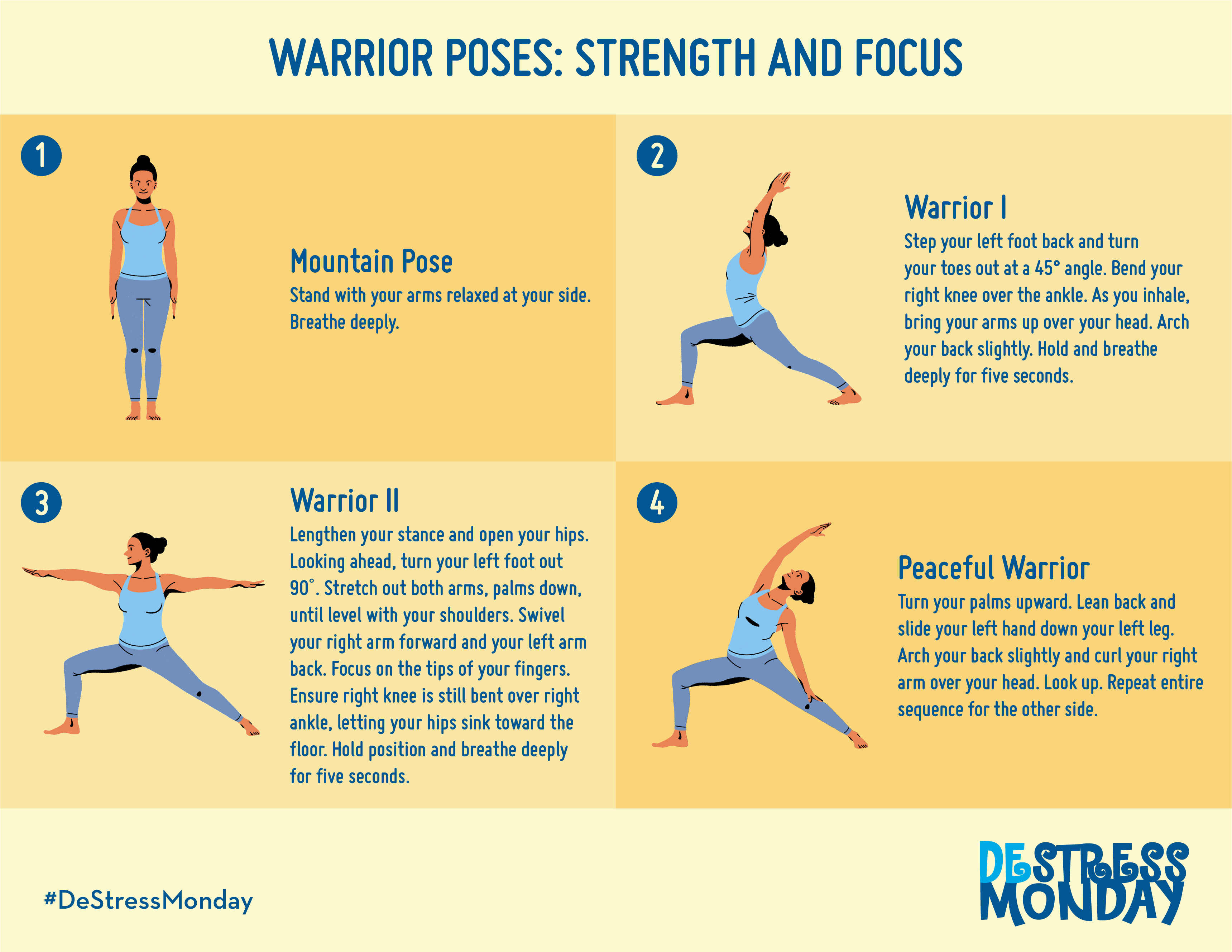

How long should you hold the warrior pose?Īim to hold these poses, especially the three Virabhadrasanas (Warrior Poses), for 20 seconds or as long as you can to ignite your willpower.


Handstand scorpion – or Taraksvasana in Sanscrit – is almost the most difficult yoga pose. What is the hardest yoga position for you? They are active postures that require strength, steadiness, and a fierce determination to hold with integrity. These beautiful and challenging poses are named after the great hero warrior Virabhadra from Hindu mythology. You get a good stretch of both the front and rear thigh (quadriceps and hamstrings), hips, and chest, as well as a back extension of the erector spinae muscle. Warrior I strengthens the legs and upper arms, improves balance and core strength, stretches the muscles around the hips. It tones the abdomen, ankles, and arches of the feet. This is a powerful standing pose that develops stamina, balance, and coordination. Virabhadrasana I stretches the whole front side of the body while strengthening the thighs, ankles, and back. Apart from the front leg being bent and the back one being straight, the actions in the leg muscles that are needed to steer the pelvis so that it’s level and pointing forward are very different in each leg. Why is this pose so anatomically difficult? Because the legs are doing two very different things. Ability to face life with an open heart.Increased flexibility in the hips and shoulders with enhanced stability.(One example: Krishnamcharya famously called "tree pose" Bhagirathasana rather than vrksasana, after an ancient sage who stood on one leg his entire life as an act of "tapas" or spiritual sacrifice). So he likely correlated the asanas with the stories of his religion when naming them. I guess this is a good time to note that the STORIES pre-date the POSES by centuries-many of the asanas we know of today were given their names by the early yoga tantrikas, but a great number of them (such as the warrior poses) were likely named by Sri Krishnamcharya, the father of modern yoga, in the early 1900s (insofar as there is no written record of some of the shapes and their corresponding names prior to his teachings). And honestly the reverse version makes me think of Shiva manifesting Virabhadra. I can imagine the "humble" version representing Virabhadra bowing to Shiva after completing his bidding. Oh what a great question! I've always taught peaceful warrior as humble warrior (shanti virabhadrasana, bowing forward from Warrior 1), and the "reaching back" version of Warrior II as radiant or reverse warrior (viparita virabhadrasana). The above seems to be the most commonly told variation, but I'd love to hear others, so please share in the comments!)) And if you know the sources for any of the above artwork, please share. ((Note that this story has been written about many places in various forms (in the Mahabarata, the Kurma Purana, etc.) as well as re-told aurally, re-written by later sages, and represented in many art forms, often with their own local traditions, so there are a lot of versions.
WARRIOR 1 POCKET YOGA SERIES
The strength in these poses literally allows us to "stand up" for others and for what we believe in.Ĭall it stimulating the energy of the manipura chakra, or embodying the warrior Virabhadra in his quest to avenge the death of Shiva’s love-either way, our sympathetic nervous system is activated in the warrior series in a way that allows us to feel more confident, alive, and powerful-just like a Warrior :) We’re allowing ourselves to be more courageous and awake. So when we then choose to “explode” open like the warrior, we’re embodying the opposite of fear and tiredness. When we feel scared or out of control or tired, we tend to take the opposite position-hunched up, even in the fetal position. "High Power" Body Language (courtesy of Amy Cuddy, Harvard University)


 0 kommentar(er)
0 kommentar(er)
